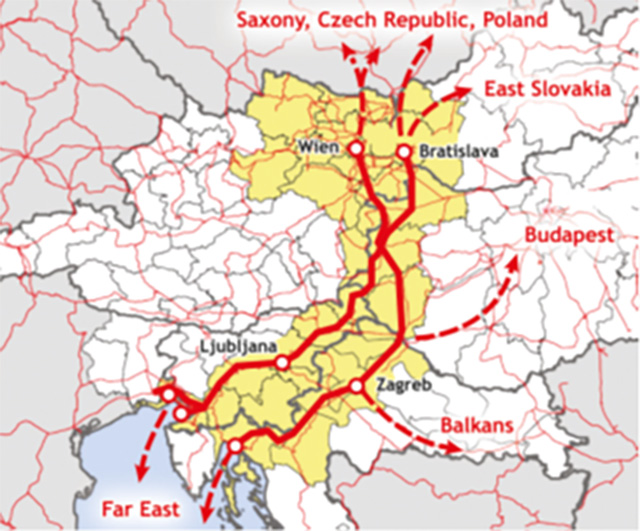South East Transport Axis (SETA) project provides faster and more competitive railway connections from Central Europe to the Northern Adriatic ports and further on to the Western Balkans.
Faster rail services in South East Europe with transport axis project
- 03 June 2015
Improving the quality of rail services in the region is necessary to provide an attractive alternative for commuters, tourists [and] companies, who currently depend on their private car or trucks. The SETA project has highlighted that improvements are possible without spending large sums of money. By implementing organisational measures and selected small scale investments in the existing infrastructure it is possible not only to provide people of the West-Transdanubian region with better transport services but also to improve the quality of location for businesses. This will result in economic growth and improve social wellbeing in our region.
The SETA partnership comprises a wide range of regional and national authorities, representing a multi-sectorial consortium which can utilise the regions’ existing expertise and skills in a complimentary way. In order to provide better connections for passenger and freight transport the project seeks to use existing rail infrastructure and small scale investments, rather than major expenditure, more efficiently. Improving the quality of rail services in the region is necessary to provide an attractive alternative for commuters and tourists, as well as for businesses that currently depend on their private cars or trucks.
With a common vision and strategy to improve the trans-European transport network (TEN-T), 11 partners from six countries between Vienna / Bratislava and the Northern Adriatic ports of Rijeka, Koper and Monfalcone are being supported by the European Regional Development Fund through the South East Europe Transnational Cooperation Programme.
Slower than road transport
Current transport services along sections of the SETA corridor are more than two hours slower than the same trip taken by private car. Through the project, the main organisational and infrastructural bottlenecks along the existing railway corridor connecting Vienna / Bratislava via Western Hungary with the Northern Adriatic ports have been identified and work has started on the development of appropriate solutions.
Small-scale investment for milestone and big results to come
In order to highlight the effectiveness of the developed solutions, routes have been tested with demonstration trains – and in September 2012 a SETA train travelled from Zagreb to Vienna in five hours (one hour less than normal)! A passenger demonstration train also ran from Monfalcone to Rijeka in May 2013 and cut the normal travel time by almost two hours. The SETA project has highlighted that improvements are possible without spending large sums of money. By implementing organisational measures and selected small scale investments in the existing infrastructure it is possible not only to provide people living in the regions along the SETA corridor with better transport services but also to improve the quality of the location for businesses.
Total investment and EU funding
Total investment for the project “SETA – South East Transport Axis” is EUR 2 835 000, of which the EU’s European Regional Development Fund is contributing EUR 2 410 000 from the Operational Programme “South East Europe (SEE)” for the 2007 to 2013 programming period.

